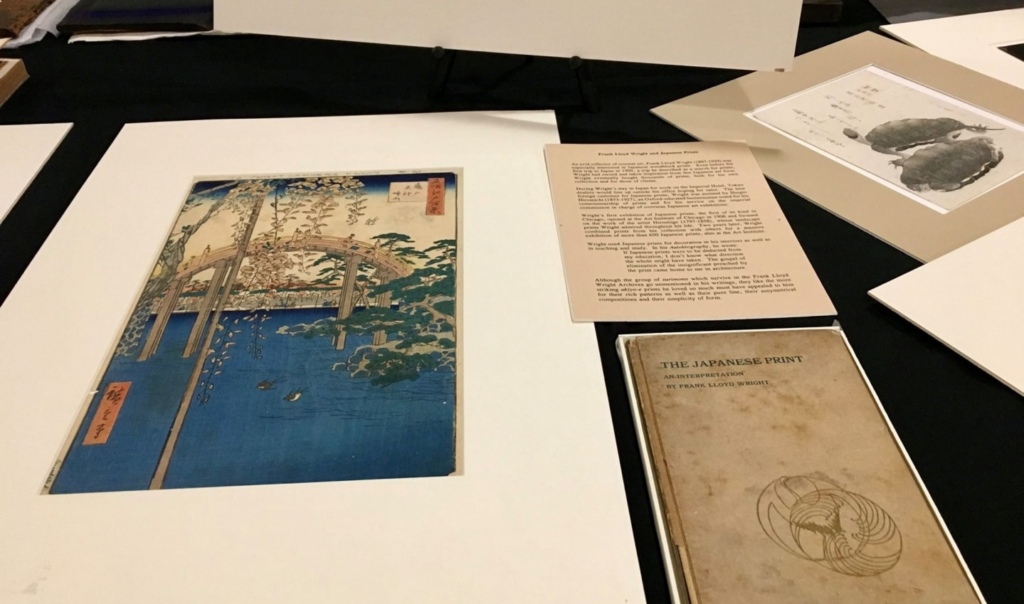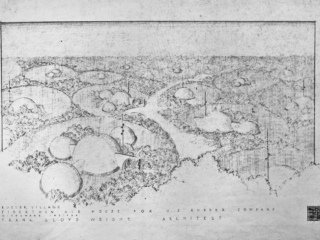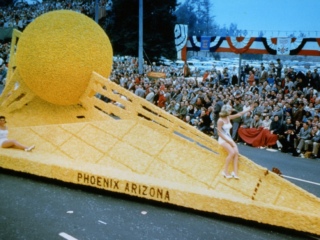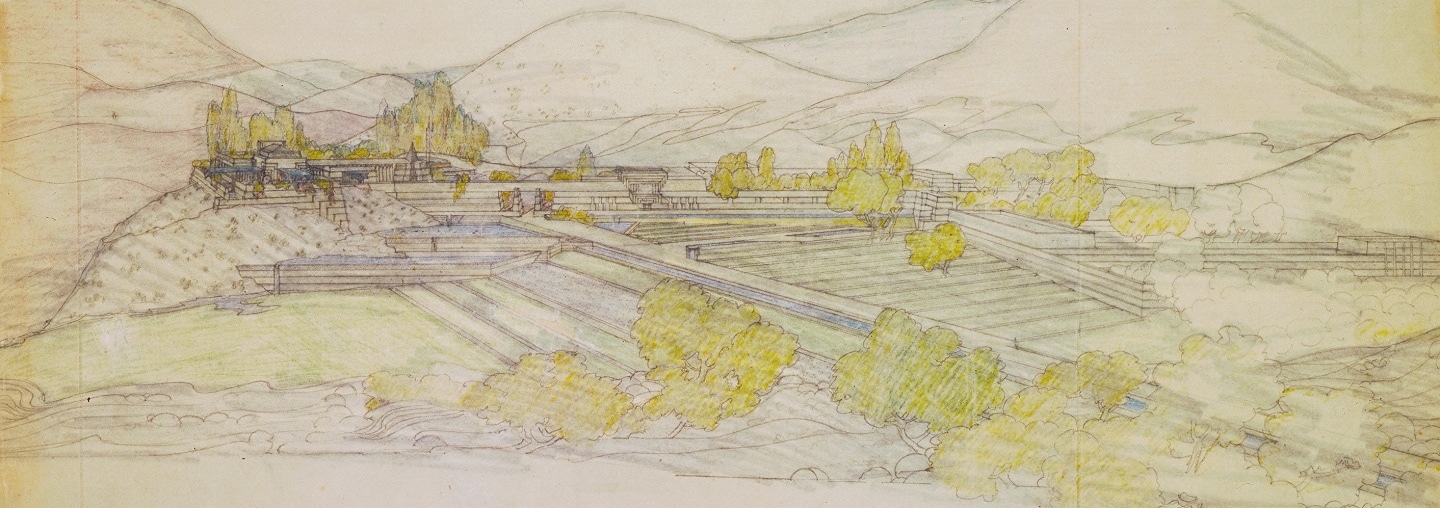
Frank Lloyd Wright’s Death Valley Desert Compound
Frank Lloyd Wright Foundation | Nov 21, 2019
In the early 1920s, Frank Lloyd Wright was commissioned to further develop an existing desert compound located near Death Valley, California. Wright’s unique design, to be built into the surrounding hills, incorporates sweeping canyon views, spring-fed fountains, and a concrete block system.
In 1924, Albert Mussey Johnson commissioned Frank Lloyd Wright to develop his Death Valley Ranch, located in Grapevine Canyon, California. Johnson, a wealthy investor and the chairman of the National Life Insurance Company in Chicago, owned 1,500 acres of land in Death Valley, and the Ranch was located on a large, spring-fed valley.1 At the same time that Wright was working on the Ranch project, Johnson also commissioned Wright to design a skyscraper in Chicago. Johnson was connected to Wright through their mutual connection, Alfred MacArthur.2
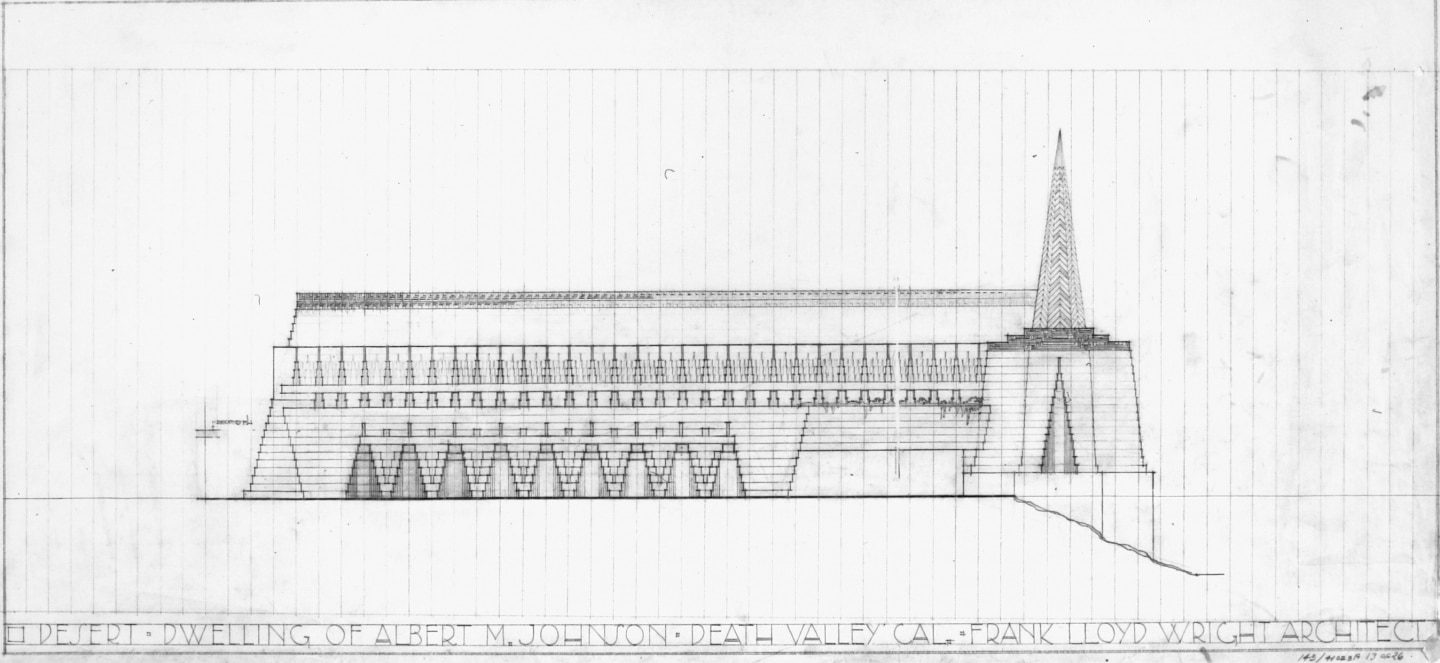
Albert M. Johnson Desert Dwelling elevation, 1924

Albert M. Johnson Desert Dwelling elevation, 1924
Although the Ranch already consisted of several buildings, Johnson wanted to expand and improve upon what was already there. Wright visited the site with Johnson in December 1923 and recalled in An Autobiography, “A.M. Johnson was a strange mixture of the fanatic and the mystic, Shylock and the humanist. Withal he was extraordinarily intelligent … We took a trip together into Death Valley, where he and Death Valley Scotty had made a place in which to live. He drove his own car, a Dodge, and as I rode beside him Nature staged a show for us all the way.”
Wright labeled the project the “Albert M. Johnson Desert Dwelling” and made dozens of drawings for the project that included a home, a guest house, a chapel, and irrigated fields. His imaginative design was to be built into the surrounding mountain and incorporated decorative concrete blocks, a plethora of spring-fed pools and fountains, corbelled arches and spires, outdoor balconies, and expansive canyon views.
Through his design, Wright emphasized the interrelation of the site itself to the roadway and the landscape. The sharp angles presented in the roadway leading up to the structures were meant to be experienced in a unique way by the automobile.
Due to cost concerns, Wright’s designs for the Desert Dwelling and the Chicago skyscraper were never executed. Johnson moved forward on the project with another architect, later noting in a letter, “ran into several hundred thousand dollars and I did not feel like assuming that investment at the time although a little later I did put up a couple of buildings and the cost of those ultimately exceeded by many times Mr.Wright’s estimate.”2
Today the site is part of the Death Valley National Park, and is home to a popular Death Valley tourist destination commonly known as Scotty’s Castle, a castle-like structure Johnson had built, named after infamous gold prospector Walter E. Scott.1
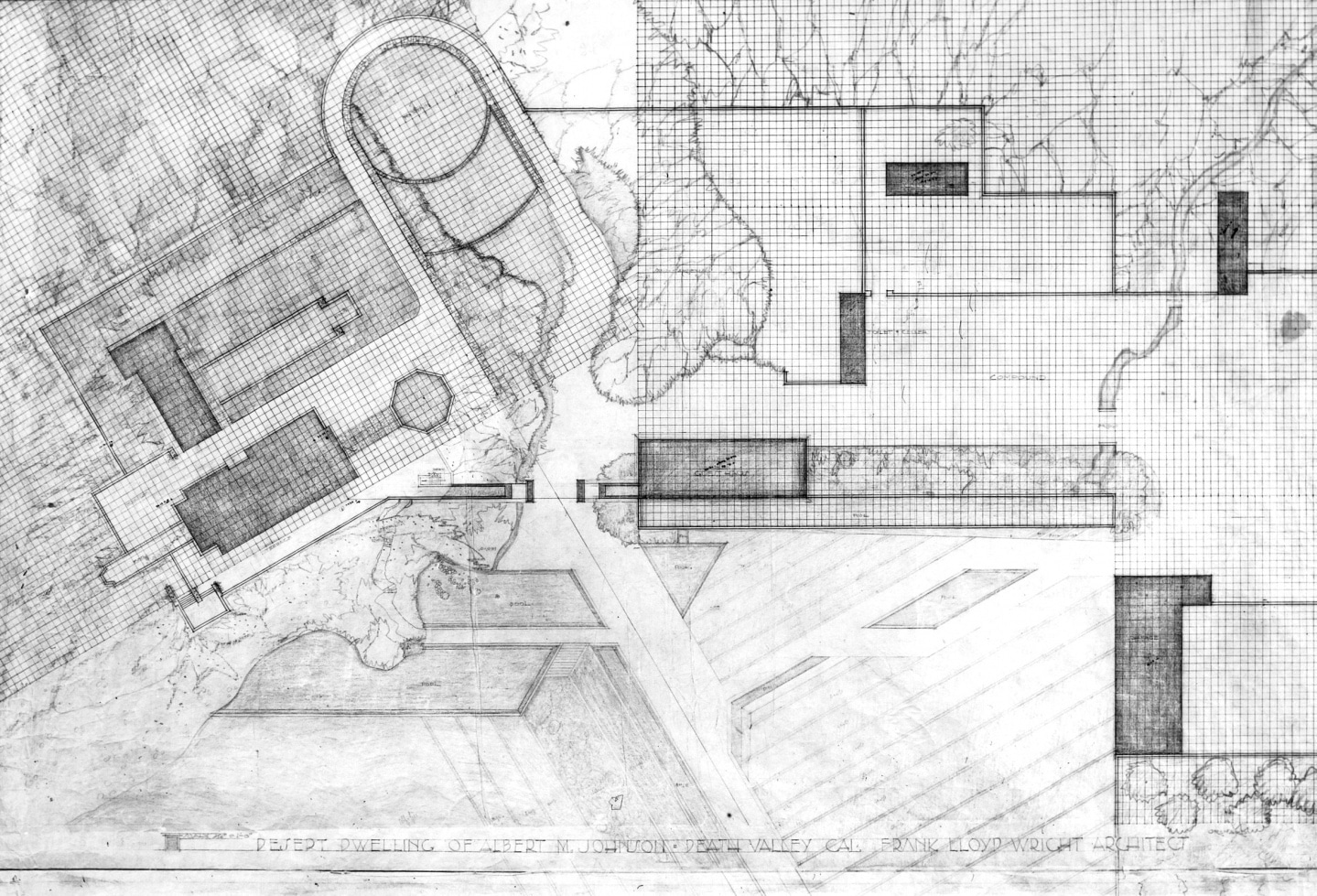
Albert M. Johnson Desert Dwelling plan, 1924

Albert M. Johnson Desert Dwelling perspective, 1924
1. National Park Service, Albert Mussey Johnson. 2. Wright in Hollywood: Visions of a New Architecture, Robert L. Sweeney (1994).
Did you know that that the Frank Lloyd Wright Foundation has an extensive collection stemming from the art, books, and other cultural ephemera that Wright collected during his lifetime? You can discover more treasures and learn about these objects on our social media every Monday when we share something from the #WrightOpenVault
